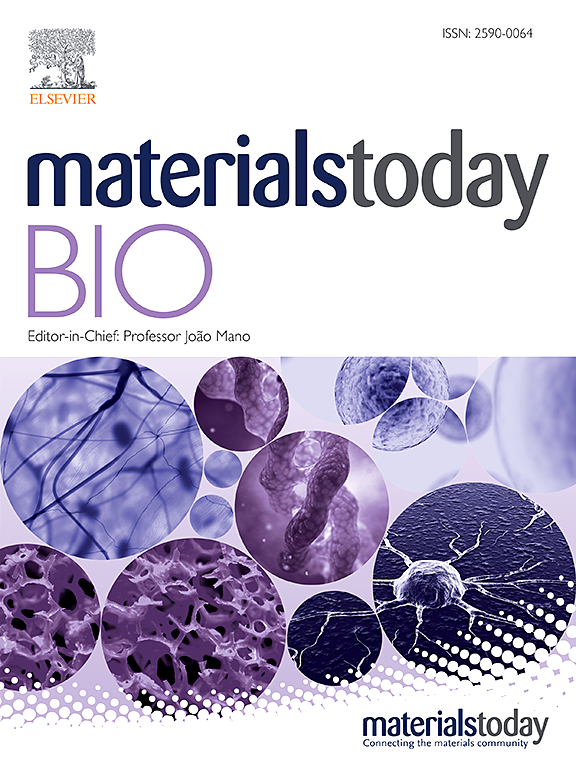Natural collagen scaffold with intrinsic piezoelectricity for enhanced bone regeneration
IF 8.7
1区 医学
Q1 ENGINEERING, BIOMEDICAL
引用次数: 0
Abstract
Materials-mediated piezoelectric signals have been widely applied in bone regeneration. Collagen is the most abundant protein in the human body, and native collagen with complete tertiary structure shows efficient piezoelectricity. However, the traditional collagen scaffolds are lack of piezoelectricity due to the destruction of the complete tertiary structure. Here, natural collagen scaffolds with the complete tertiary structure were prepared. Alkali treatment made the collagen scaffold lose piezoelectricity. The collagen with/without piezoelectricity (PiezoCol/NCol) scaffolds both possessed good cytocompatibility and promoted cell adhesion. After being implanted subcutaneously, the NCol scaffold almost did not affect bone regeneration with/without ultrasound treatment. However, under ultrasound treatment, the PiezoCol scaffold promoted the new bone formation with enhanced osteogenic differentiation, angiogenesis, and neural differentiation, meaning that piezoelectricity endows collagen with satisfactory promotion for bone regeneration. Meanwhile, the PiezoCol scaffold can also accelerate bone formation without ultrasound treatment, which should be attributed to the daily exercise-caused weak piezoelectric stimulation. Further, the proteomic analysis revealed the mechanism by which the PiezoCol scaffold promoted bone tissue formation via mainly upregulating the PI3K-Akt signaling pathway. This study provides a new strategy to enhance the osteoinduction of collagen scaffold for bone regeneration by maintaining intrinsic piezoelectricity.

求助全文
约1分钟内获得全文
求助全文
来源期刊

Materials Today Bio
Multiple-
CiteScore
8.30
自引率
4.90%
发文量
303
审稿时长
30 days
期刊介绍:
Materials Today Bio is a multidisciplinary journal that specializes in the intersection between biology and materials science, chemistry, physics, engineering, and medicine. It covers various aspects such as the design and assembly of new structures, their interaction with biological systems, functionalization, bioimaging, therapies, and diagnostics in healthcare. The journal aims to showcase the most significant advancements and discoveries in this field. As part of the Materials Today family, Materials Today Bio provides rigorous peer review, quick decision-making, and high visibility for authors. It is indexed in Scopus, PubMed Central, Emerging Sources, Citation Index (ESCI), and Directory of Open Access Journals (DOAJ).
 求助内容:
求助内容: 应助结果提醒方式:
应助结果提醒方式:


